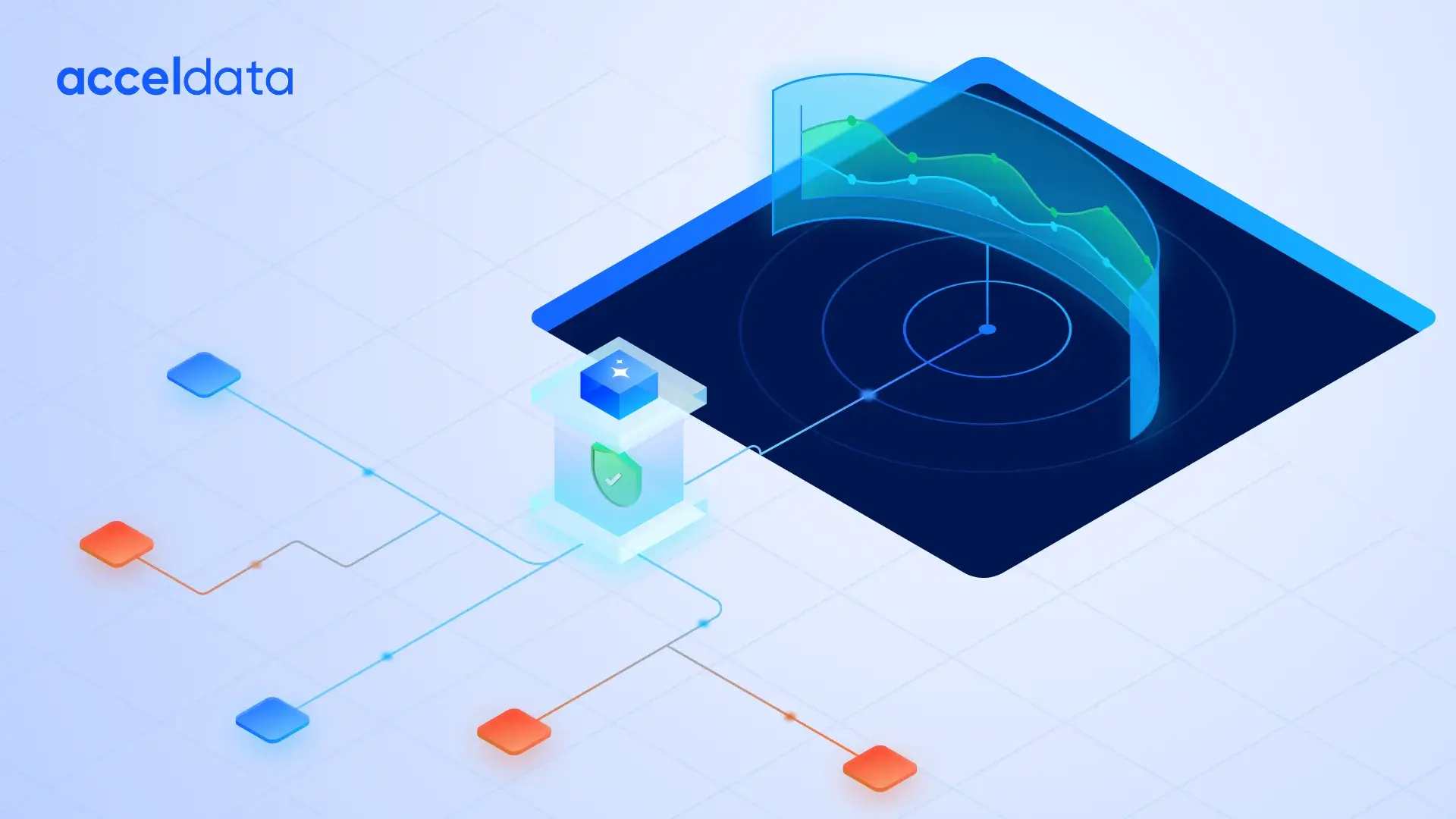Today, data is the lifeblood of organizations, and with that comes responsibility. A single breach is all it takes for customers to lose trust and for companies to face millions in regulatory penalties.
The global average cost of a data breach has risen to $4.88 million, a 10% increase from 2022. Non-compliance only adds to the risk—companies that fail to comply with regulations can face fines of up to 4% of annual revenue under GDPR.
By understanding and embedding good data governance practices, businesses can mitigate these risks, strengthen security, and maintain compliance.
What is Data Governance and Why is it Critical for Security?
At its core, data governance is a framework of policies, processes, and practices that ensure data is properly managed, accessed, and protected across an organization. Think of it as the “rulebook” that ensures everyone in your company handles data responsibly.
The benefits of implementing data governance are:
- Data security: Protecting sensitive customer, employee, and financial data from misuse or unauthorized access.
- Control: Ensuring only the right people can use the right data at the right time.
- Compliance: Meeting regulatory obligations such as GDPR, HIPAA, and CCPA without scrambling at the last minute.
According to a Gartner survey, having a data governance framework in place improved data security (66%) and reduced compliance breaches (52%), proving its value in protecting against cyber threats. Good governance, when implemented with best practices, doesn’t just lock down data—it ensures its integrity, availability, and trustworthiness.
Key Data Governance Best Practices for Enhanced Security and Control
When good data governance practices are implemented correctly, they ensure an organization's data compliance and security. Here are a few fundamentals and best practices that make the difference between vulnerability and resilience.
- Data classification and labeling
Not all data is created equal. Identifying and labeling data according to sensitivity helps organizations decide which datasets must be encrypted, have stricter access, or be made anonymous.
Think of it like airport security. Passengers are categorized—some receive standard checks, others fast-track clearance, and some require extra screening. Similarly, when a bank classifies customer data as “public,” “internal,” or “highly confidential,” it knows exactly how much protection to apply. This ensures sensitive financial data doesn’t get treated with the same casualness as a public blog post.
- Role-based access control (RBAC)
Access should never be “one-size-fits-all.” RBAC ensures that users only see the data relevant to their role, dramatically reducing insider threats.
Imagine a hospital: doctors can access patient records, but the billing team should only see payment details, not medical histories. That’s RBAC in action. With data access control in place based on role, organizations minimize unnecessary exposure of sensitive data.
- Data encryption and masking
There is no compromise when it comes to protecting data, whether it's in storage or in transit. Encryption makes data unreadable to outsiders, while masking techniques secure sensitive information so it can be safely used in testing or for analytics.
When you use WhatsApp, your messages are encrypted so only you and the recipient can read them. Businesses apply the same logic—encrypting customer credit card data during transactions, and masking the numbers so that call center agents only see the last four digits, thereby preventing exposure and securing sensitive data.
- Audit trails and monitoring
Accountability starts with visibility. With detailed logs of who accessed what data and when, teams can quickly pinpoint who is responsible for data changes and spot suspicious activity before it becomes a problem. Agentic AI-driven monitoring and observability is now being adopted to detect patterns humans might miss. These agentic AI solutions are designed to work autonomously, detecting and fixing data anomalies to ensure end-to-end data security.
Think of CCTV cameras in a store. They don't necessarily stop theft, but they ensure accountability and help detect unusual behavior. Similarly, organizations maintain an audit trail—a detailed record of every action taken with data.
For instance, an employee in marketing who typically accesses a handful of customer records suddenly tries to download thousands of customer files after business hours. An automated monitoring system immediately flags this unusual behavior as a potential security risk, providing the exact logs needed for a quick investigation.
- Data lifecycle management
From creation to deletion, every piece of data needs structured handling. Secure storage, timely archiving, and safe deletion reduce the risk of obsolete data becoming a liability.
Consider how we declutter our phones—keeping important files, archiving old photos, and deleting irrelevant screenshots. Businesses do the same with data. For example, a healthcare provider might archive patient records after seven years and securely delete or archive them once regulations allow, reducing both storage costs and risk.
Together, these best practices form the backbone of a secure and well-governed data environment, ensuring sensitive information is always handled with the right level of protection. By applying them consistently, organizations not only strengthen compliance but also build lasting trust with customers and stakeholders.
Implementing a Data Governance Framework
A well-structured framework ensures that data security and compliance efforts are consistent, measurable, and future-ready. Let’s break it down:
- Building a governance team
Creating a dedicated data governance team with clear roles and responsibilities is the foundation of an effective framework. Appoint a Chief Data Officer (CDO) or governance lead, backed by a cross-functional team spanning IT, compliance, and business units. It ensures ownership and accountability, preventing data management from becoming fragmented or inconsistent across the organization.
- Developing policies and procedures
Strong data governance policies cover access control, privacy, retention, and compliance. Policies must be written in plain language and backed by executive support to drive adoption.
It creates standardized practices, reducing risks of misuse or regulatory non-compliance while promoting uniformity across teams.
- Continuous monitoring and improvement
Governance is not a one-time effort; it requires ongoing monitoring, audits, and updates to adapt to evolving security threats and regulations. With evolving regulations and threats, organizations must regularly audit and refine their governance practices.
It helps organizations stay agile and resilient, ensuring governance remains effective as business needs and compliance standards evolve.
Implementing these steps helps organizations move beyond reactive security measures and establish proactive, future-proof governance practices. Ultimately, a robust data governance framework strengthens trust, reduces risks, and gives leaders greater confidence in their data-driven decisions.
Challenges in Implementing Data Governance Best Practices
Even the most well-designed data governance strategies encounter roadblocks when put into practice. Recognizing these challenges upfront allows organizations to prepare with proactive solutions rather than reacting to problems later.
- Data silos: Data silos create fragmented information, making it difficult to enforce consistent governance rules across an entire organization. To address this, companies are now relying on centralized data catalogs and integration platforms to unify their data landscape.
- Resistance to change: Employees often resist new, stricter policies. This is where strong leadership and a smart change management strategy become critical for a smooth transition. By actively involving teams in the process, you can build buy-in and turn potential friction into shared ownership.
- Resource constraints: Smaller organizations often lack the budget or staff to manage complex data. Fortunately, cloud-native governance platforms and automation are game-changers, helping teams scale their efforts without getting overwhelmed.
Addressing these challenges requires not only technology but also leadership commitment and cultural alignment. With the right approach, organizations can turn these obstacles into opportunities, strengthening governance practices and building long-term resilience.
Case Studies: Real-World Success Stories of Data Governance Best Practices
How do leading companies actually put data governance into practice? These real-world examples highlight how top brands leverage best practices to protect data, ensure compliance, and drive business success.
Data encryption: Netflix
Data governance is paramount, and for a company like Netflix, it's about much more than just a legal requirement—it's a commitment to customer trust. The decision to implement Transport Level Security (TLS) for video streams was a crucial move in this strategy, a testament to the company's focus on privacy and security.
The core challenge for Netflix was twofold: protect sensitive customer data and viewing habits from eavesdropping on insecure networks while maintaining the global efficiency of its massive infrastructure. Encrypting video content with TLS ensures that personal viewing habits and other confidential information are secured from source to screen, a key component of robust data governance.
Data monitoring and observability: Top consumer bank
Data monitoring is crucial for businesses to ensure trust and reliability in their data, which directly impacts everything from customer experience to regulatory compliance. A top national consumer bank faced this challenge, with millions in revenue lost from inaccurate campaigns and a risk of over $10M in fines due to compliance issues.
To solve this, the bank implemented the Acceldata observability platform, which provided a unified view across its complex data ecosystem. Acceldata helped them move from a reactive approach—where they'd find issues after they caused a problem—to a proactive one. The platform’s near-real-time anomaly detection and monitoring minimized delays and improved data quality, leading to significant results.
The bank reduced SLA breaches by an impressive 96% and recovered millions in lost revenue, all while ensuring continuous compliance and avoiding costly fines.
Data lifecycle management: The New York Times (Media)
For The New York Times, data governance became the crucial framework for transforming its historical photo archive from a risk into a valuable asset. The newspaper's massive collection, known as "The Morgue," was stored in physical cabinets and was vulnerable to damage, as demonstrated by a flood. This posed a significant data lifecycle management problem: a priceless asset was unmanaged and inaccessible.
The Times solved this by partnering with Google Cloud, initiating a complete data lifecycle. The process began with the creation of new digital data by meticulously scanning millions of photos. AI was then used for processing, automatically extracting rich metadata from handwritten notes on the back of photos, turning a static collection into a searchable database.
The data was then stored securely in the cloud, protecting it from physical threats and ensuring its long-term preservation. This allowed The Times to utilize the data to unearth untold stories and create new content, demonstrating how a proactive governance strategy can not only secure assets but also unlock their hidden value.
Ultimately, these case studies prove that proactive data governance is a powerful business driver. By taking control of their data, these companies didn't just solve problems; they created new opportunities for growth and innovation.
Enhance Data Governance and Security with Acceldata
As cyber threats intensify and compliance demands grow, implementing data governance and data protection best practices has become a cornerstone of business resilience. From data classification and encryption to lifecycle management and continuous monitoring, good data governance practices not only protect sensitive information but also build long-term trust with customers and regulators.
This is where solutions like Acceldata’s data observability and governance platform play a game-changing role. By automating monitoring, ensuring data quality, and enabling proactive policy enforcement, Acceldata helps organizations move beyond compliance and toward true data confidence. For businesses seeking to secure sensitive data and strengthen governance, the time to act is now.
Additionally, Acceldata’s agentic data management platform helps enterprises tackle data challenges with AI-driven precision. It empowers teams with:
- AI Agents for anomaly detection
- The xLake Reasoning Engine to contextualize data processing
- A collaborative Business Notebook for natural language exploration
- Agent Studio for custom AI automation
With comprehensive data observability, organizations gain real-time visibility into pipeline health, quality, and compliance, making it a powerful foundation for stronger governance, improved data quality, and reliable analytics.
Ready to enhance your data governance and security? Contact Acceldata to learn how we can help you implement data governance best practices to secure your data and ensure compliance with industry regulations. Request a demo today.
FAQs about Data Governance and Security
1. What are the key best practices for data governance?
Good data governance practices ensure an organization's data compliance. They involve setting clear standards, automating processes, and fostering collaboration across all teams.
2. How can data governance enhance security and control over data?
Data governance enhances security by creating clear policies for data handling, from collection to storage. It ensures that data is protected by technologies such as encryption and that access is strictly monitored.
3. What is role-based access control, and why is it important?
Role-based access control (RBAC) is a security method that grants users data access based on their specific job responsibilities. It is important because it minimizes security risks by limiting access to only the data necessary for an employee's role.
4. How do I create a data governance framework for my organization?
Creating a data governance framework begins with defining clear goals and policies for data handling. You must also establish a team to oversee implementation, ensuring that everyone understands and follows the new standards.
5. What are the common challenges in implementing data governance?
Common challenges include a lack of resources, employee resistance to new policies, and siloed data systems that are difficult to centralize. Organizations can overcome these by adopting a phased approach and leveraging automation.













.webp)
.webp)


